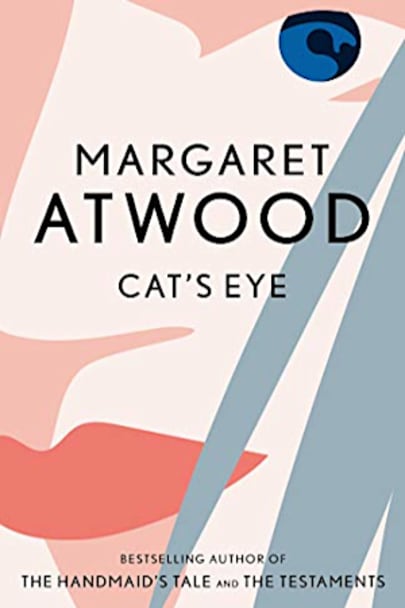From the #1 New York Times bestselling author of The Handmaid’s TaleCat’s Eye is the story of Elaine Risley, a controversial painter who returns to Toronto, the city of her youth, for a retrospective of her art. Engulfed by vivid images of the past, she reminisces about a trio of girls who initiated her into the the fierce politics of childhood and its secret world of friendship, longing, and … secret world of friendship, longing, and betrayal. Elaine must come to terms with her own identity as a daughter, a lover, an artist, and a woman—but above all she must seek release form her haunting memories. Disturbing, humorous, and compassionate—and a finalist for the Booker Prize—Cat’s Eye is a breathtaking novel of a woman grappling with the tangled knot of her life.
more



CAT’S EYE was my second read from Ms. Atwood’s catalog, and it certainly won’t be my last. My son’s Advanced Placement Lit teacher assigned this book to the class. I told my son I’d follow along with everything he has to read so we can talk about the stories if he has questions.
I had no idea what CAT’S EYE was about, but it sucked me right in. Margaret Atwood is a true MASTER of literary manipulation. The way she describes people, places, events, and memories leaves me breathless with their power. She shows her reader so much and tells very little, which is incredibly hard to do. She paints using a rich, diverse, and sometimes grungy palette, replete with lots of dirt and blood and tears. Her words are texture brought to life. They breathe as if living things, and I loved hearing them whisper in my ear, reminding me of how things used to be as well as how they are. Though it was published in 1988 and the beginning of the novel takes place during World War II, there’s a timeless, universal quality about Elaine’s story that spans generations. I think readers—women in particular—can relate to this book on some level, no matter when they were born.
As with a lot of literary fiction, I didn’t feel like the story followed many of the “Rules of Writing.” In Atwood’s expert fingers, the rules are crushed like delicate butterfly wings. She doesn’t need rules. She makes her own, and I bow down to them all.
Almost every little nugget of memory that comes out Elaine’s past was something I could relate to on a personal level. The teasing by other girls when she was a kid, wanting to fit in but not knowing how, being totally naive yet wanting so much to be an adult, depression, feelings of worthlessness, stress about creating art, difficulty with managing friendships and relationships, deaths of loved ones, and a big one for me: CONFORMITY. How do I fit in, if at all? What do others think about me? Should I care what they think? Where is my place in this harsh world, and do I have a right to want something bigger, something more?
Atwood owns the monopoly on exposing gender issues, eroding away the grime that settles on them, and forcing us to face their truths. She deepens the shadows while shining the spotlight on gender issues many of us face. It often felt like she stole scenes straight out of my personal life story and injected them with high-octane fuel, making them stronger, more vivid, more relevant, and in some ways even more painful. She squeezes every last drop of emotion from each scene and makes me feel things I forgot how to feel. She busted unpleasant memories out of the jail I trapped them in and forced me to confront them. My brain got very touchy-feely with this book, and it wasn’t always comfortable. That’s okay. Art shouldn’t always be comfortable.
I am insanely jealous of Atwood’s talent and feel lucky to have experienced it firsthand through this brilliant novel, which I may have liked even more than THE HANDMAID’S TALE. If you’re on the fence about Margaret Atwood, I highly recommend you check out both books.
I listened to about half of CAT’S EYE on audio and read the other half on my Kindle. The Audible narrator was solid, but I enjoyed reading more because I could highlight on my Kindle. There are SO. MANY. HIGHLIGHTS. I was truly blown away by CAT’S EYE and look forward to reading more from Margaret Atwood.
I wasn’t sure at first if I’d like this one. What makes it a feminist novel? Anyway, by the time I finished, I really liked it. Elaine’s back and forth from youth to adulthood were well thought out for the story telling aspect. The visual imagery is very good and I found a desolate feeling each time I picked it up. I needed to get to the end though.
I read this book about 20 years ago but parts of it have stayed with me ever since.
Well written but action slow and I felt like I was prodding through the story line.
This is one of Margaret Atwood’s greatest books.
Brilliant writer. Excellent book.
I’ve never read such a true treatment of the damage young women can do to each other.
Atwood is so good, but she writes about people in a way that makes me kind of despair about the whole state of humanity. Her characters and stories are dark and disturbing. There’s only so much of that I can take, but when I’m in the mood for it she certainly delivers.
One of the most realistic interpretations of growing up and the ghosts of childhood friendship. Atwood describes the paintings of the main character with such detail its almost impossible not to have a clear mental picture. Have re-read this book over and over
I found this book difficult to read–it took me months to finish it. But it’s also a necessary look in the mirror of how choices and relationships mold us.